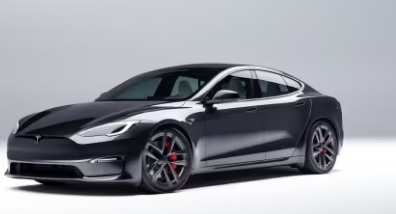Key specs
Tesla Model Y (SUV, Crossover) Model Y 2021,2022,2023,2024,2025
What is the body type, Tesla Model Y Standard Range (204 Hp) 2021?
SUV, Crossover, 5 Doors, 44747 Seats
How fast is the car, Tesla Model Y Standard Range (204 Hp) 2021?
217 km/h 134.84 mph
How many cylinders, Tesla Model Y Standard Range (204 Hp) 2021?
Electric,
What is the drivetrain, Tesla Model Y Standard Range (204 Hp) 2021?
Rear wheel drive,
How long is this vehicle, Tesla Model Y Standard Range (204 Hp) 2021?
4750 mm
187.01 in.
How wide is the vehicle, Tesla Model Y Standard Range (204 Hp) 2021?
1920 mm
75.59 in.
What is the curb weight, Tesla Model Y Standard Range (204 Hp) 2021?
1844 kg
4065.32 lbs.
Tesla Model Y (SUV, Crossover) Model Y 2021,2022,2023,2024,2025 Specs
General information
| Brand |
Tesla |
| Model |
Model Y (SUV, Crossover) |
| Version |
Model Y |
| Engine version |
Standard Range (204 Hp) |
| Year production start |
2021 |
| Vehicle type |
SUV, Crossover |
| Acceleration 0 - 100 kmh sec |
6.9 sec |
| Curb weight kg -lbs total |
1844 kg
4065.32 lbs.
|
| Overall length mm - inch |
4750 mm
187.01 in.
|
| Doors |
5 |
| Top Speed |
217 km/h 134.84 mph |
Engine specs
| Engine position and orientation |
Rear axle, Transverse |
| Cylinders |
Electric |
| Weight / horsepower kg/hp - hp/tons |
9 kg/Hp
110.6 Hp/tonne
|
| Weight / torque kg/Nm - Nm/tons |
5.3 kg/Nm, 189.8 Nm/tonne
5.3 kg/Nm
189.8 Nm/tonne
|
| Fuel type |
Electricity |
| Powertrain architecture |
BEV (Electric Vehicle) |
| Electric motor power |
204 Hp
|
| Electric motor torque |
350 Nm 258.15 lb.-ft.
|
| Engine location |
Rear axle, Transverse
|
| Total available power |
204 Hp
|
| Totale available torque |
350 Nm 258.15 lb.-ft.
|
Transmission and Drive system
| Drive configuration |
Rear wheel drive
|
Brakes
| Front brakes |
Ventilated discs, 355x25 mm |
| Rear brakes |
Ventilated discs, 335x20 mm |
| Anti-lock brake system |
ABS (Anti-lock braking system) |
Steering
| Steering type |
Steering rack and pinion |
| Turning diameter m - ft |
12.1 m
39.7 ft.
|
Suspension
| Front suspension |
Double wishbone, Transverse stabilizer |
| Rear suspension |
Transverse stabilizer, Independent multi-link |
Wheels & Tyres
| Wheels size |
Front wheel tires: 255/45 R19; 255/40 R20; 255/35 R21
|
| Wheels rims |
Front wheel rims: 9.5J x 19; 9.5J x 20; 9.5J x 21 |
Passenger
| Passengers seats |
44747 |
| Trunk space min liter | cu. Ft. |
854 l
30.16 cu. ft.
|
| Trunk space max liter | cu. Ft. |
2041 l
72.08 cu. ft.
|
Dimensions
| Overall length mm - inch |
4750 mm
187.01 in.
|
| Overall width mm -inch |
1920 mm
75.59 in.
|
| Overall height mm -inch |
1624 mm
63.94 in.
|
| Wheelbase mm - inch |
2890 mm
113.78 in.
|
| Track width front mm - inch |
1636 mm
64.41 in.
|
| Track width rear mm - inch |
1636 mm
64.41 in.
|
| Coefficient of drag |
0.23
|
Weights
| Curb weight kg -lbs total |
1844 kg
4065.32 lbs.
|
| Gross weight kg -lbs total |
2369 kg
5222.75 lbs.
|
| Capacities kg - lbs |
525 kg
1157.43 lbs.
|
Engine type
Electric
https://www.thecarspec.com/components/engine/electric

